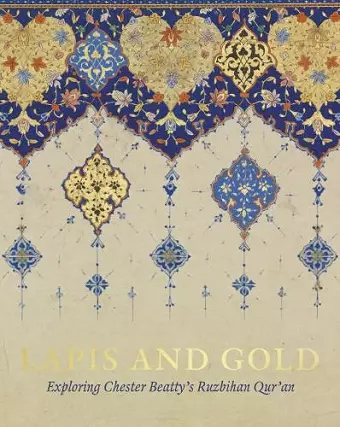Lapis and Gold
Exploring Chester Beatty’s Ruzbihan Qur’an
Format:Hardback
Publisher:Ad Ilissum
Published:30th Apr '18
£90.00
Supplier delay - available to order, but may take longer than usual.

This non-fiction hardback, "Lapis and Gold" from Elaine Wright, was published 30th April 2018 by Ad Ilissum.
ISBN: 9781912168040
Dimensions: 300mm x 239mm x 36mm
Weight: 1792g
352 pages